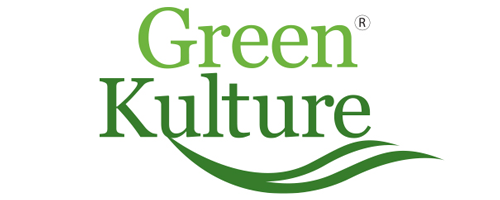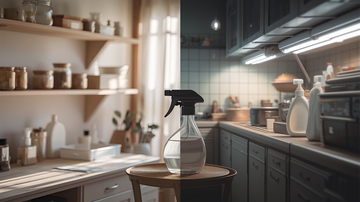- Understanding Zero-Waste Living: Beyond the Buzzword
- Cost Comparison: Zero-Waste vs. Conventional Products
- Environmental Impact Analysis
- Common Challenges and Practical Solutions
- Starting Your Zero-Waste Journey
- Conclusion: The True Value of Zero-Waste Living
Making the switch to zero-waste living often raises one immediate question: "Is it more expensive than conventional alternatives?" It's a valid concern that prevents many from embracing more sustainable choices. The truth is more nuanced than a simple yes or no answer.
While some zero-waste products require higher upfront investments, they typically save money over time while significantly reducing environmental impact. In Singapore's urban environment, where convenience often dictates our choices, understanding the true cost-benefit analysis of sustainable living becomes even more crucial.
In this comprehensive guide, we'll explore the financial reality of zero-waste living compared to conventional alternatives, breaking down costs across different household categories and examining the environmental impact of these choices. Whether you're just beginning to consider sustainability or looking to expand your eco-friendly practices, this analysis will help you make informed decisions that benefit both your wallet and our planet.
Understanding Zero-Waste Living: Beyond the Buzzword
Zero-waste living isn't about achieving perfection—it's about making conscious choices to reduce waste wherever possible. The philosophy centers around the 5Rs: Refuse, Reduce, Reuse, Recycle, and Rot (compost). By prioritizing these principles, individuals can significantly decrease their environmental footprint while often discovering financial benefits.
The zero-waste movement challenges our throwaway culture by encouraging products with minimal packaging, longer lifespans, and natural, biodegradable materials. It's about seeing waste as a design flaw rather than an inevitable byproduct of modern living. In Singapore's context, where land is scarce and waste management presents unique challenges, embracing zero-waste practices becomes particularly meaningful.
While conventional alternatives offer convenience through disposability and accessibility, they often hide their true costs—to our health, environment, and ultimately our wallets. These hidden costs accumulate over time in ways we rarely calculate when making purchasing decisions.
Cost Comparison: Zero-Waste vs. Conventional Products
Understanding the financial implications of zero-waste choices requires looking beyond initial price tags to consider product lifespan, replacement frequency, and cumulative costs. Let's break down this comparison across major household categories:
Kitchen Essentials
The kitchen generates significant household waste through food packaging, single-use items, and food waste itself. Here's how zero-waste alternatives compare financially:
Food Storage: Investing in glass containers costs approximately $30-50 upfront compared to $5-10 for plastic alternatives. However, quality glass containers can last 5+ years versus plastic's typical 1-2 year lifespan before staining, warping or degrading. Over five years, replacing plastic containers costs $25-50, making glass the more economical long-term choice while eliminating microplastic exposure.
Everyday Essentials: A set of cloth napkins costs $15-25 versus approximately $30-40 spent on paper towels annually. Beeswax wraps ($15-25) replace multiple rolls of plastic wrap ($30-40 annually). Stainless steel straws ($8-12 set) replace hundreds of disposable straws. Within 6-12 months, most reusable kitchen items pay for themselves.
Food Shopping: Bulk shopping with reusable containers can reduce food costs by 10-15% by eliminating packaging costs built into product pricing. While setting up a zero-waste kitchen requires initial investment, the average household saves $250-400 annually once systems are established.
Bathroom Products
The bathroom presents numerous opportunities for waste reduction and cost savings:
Personal Care: Solid shampoo bars ($10-15) last 2-3 months (equivalent to 2-3 bottles of liquid shampoo at $8-12 each). Safety razors cost $15-30 upfront versus $10-15 for disposable razors, but replacement blades cost just $0.10-0.25 compared to $2-4 for cartridges. The annual savings equals $40-60 for razor users.
Dental Care: Bamboo toothbrushes cost $3-5 each (comparable to quality plastic options) but eliminate plastic waste. Tooth tablets or powder ($5-8 per month) compare similarly to conventional toothpaste costs while reducing plastic packaging.
Menstrual Products: Menstrual cups ($25-40) or period underwear ($20-35 per pair) represent significant savings compared to disposable products, with cups lasting up to 10 years and underwear lasting 2-3 years. This translates to potential savings of $1,200-1,500 over ten years while preventing hundreds of disposable products from entering landfills.
Cleaning Solutions
Household cleaning presents some of the most substantial opportunities for both cost savings and reducing chemical exposure:
Multi-Purpose Cleaners: Conventional cleaning products typically cost $4-6 per bottle and contain synthetic chemicals that can leave harmful residues on surfaces. In contrast, enzyme-based cleaners like those offered by Green Kulture use natural fruit and vegetable enzymes to provide effective, non-toxic cleaning power.
Long-Term Value: While some sustainable cleaning products have a slightly higher upfront cost ($8-15), they're often concentrated formulas requiring less product per use. Green Kulture's enzyme cleaners, for example, can be diluted for different applications, making them more economical over time while ensuring your home remains free from toxic residues.
Health Considerations: Conventional cleaners typically don't factor in health costs associated with chemical exposure—from respiratory irritation to more serious long-term concerns. Using natural enzyme cleaners eliminates these risks, providing value beyond direct financial comparison.
By switching to concentrated, multi-purpose enzyme cleaners, households can save $100-150 annually while reducing plastic packaging waste by 70-80% and eliminating chemical runoff into waterways. Green Kulture's bundled cleaning solutions offer additional savings for those ready to transform their entire cleaning routine.
Environmental Impact Analysis
While cost considerations are important, the environmental impact difference between zero-waste and conventional choices is often even more dramatic:
Waste Reduction Metrics
The average Singaporean generates approximately 800kg of waste annually. Studies show that conscious zero-waste practices can reduce this by 60-80%, potentially keeping 480-640kg of materials out of incineration or landfill per person each year.
Plastic waste deserves particular attention. A typical household using conventional products discards 25-40kg of plastic packaging annually. Zero-waste alternatives dramatically reduce this figure, with the most committed practitioners reducing plastic waste by over 90%.
For perspective, each reusable water bottle prevents approximately 167 plastic bottles from being used annually. A family of four using reusable bottles can prevent over 600 plastic bottles from entering the waste stream each year—a small change with significant impact.
Chemical Elimination Benefits
Conventional cleaning and personal care products introduce numerous synthetic chemicals into our homes and waterways. The average household uses products containing over 60 different industrial chemicals, many of which haven't been adequately tested for long-term health impacts.
Enzyme cleaners, like those developed by Green Kulture, work differently. Rather than harsh chemicals, they use natural enzymes derived from fruit and vegetable fermentation to break down dirt, grime, and organic matter. This approach provides effective cleaning without introducing potentially harmful substances into your home environment or water systems.
The environmental benefit extends beyond your home. When conventional cleaning products wash down drains, their chemical components can harm aquatic ecosystems and contribute to water pollution. Enzyme-based cleaners biodegrade naturally without causing ecological damage.
Carbon Footprint Considerations
Zero-waste choices typically have lower carbon footprints due to several factors: reduced packaging production, fewer transportation requirements (especially for concentrated products), and often more sustainable manufacturing processes.
Locally produced sustainable products, like Green Kulture's Singapore-made enzyme cleaners, further reduce carbon emissions by eliminating long-distance shipping. Conventional alternatives, with their complex supply chains and disposable nature, generate significantly more greenhouse gas emissions across their product lifecycle.
Additionally, many zero-waste products are designed for durability rather than planned obsolescence. This extended lifespan spreads the environmental impact of production over a longer period, reducing the per-use environmental footprint compared to frequently replaced conventional alternatives.
Common Challenges and Practical Solutions
While the benefits of zero-waste living are clear, several challenges can make the transition seem daunting:
Initial Investment Barriers: The upfront costs of sustainable alternatives can deter those on tight budgets. Solution: Start gradually by replacing items as they run out rather than all at once. Begin with changes that offer the quickest return on investment, like reusable water bottles or shopping bags.
Convenience and Time Concerns: Zero-waste options sometimes require more planning or preparation. Solution: Focus first on convenient swaps that don't disrupt routines significantly. For cleaning, multi-purpose enzyme cleaners actually simplify routines by replacing multiple specialized products.
Availability Challenges: Sustainable alternatives aren't always easily accessible. Solution: Support local sustainable brands like Green Kulture that are making eco-friendly options more available in Singapore. Online shopping has also significantly improved access to zero-waste products.
Knowledge Gaps: Understanding which alternatives truly offer environmental benefits can be challenging amid greenwashing. Solution: Research brands' sustainability credentials and look for transparent companies that clearly communicate their ingredients and practices.
Starting Your Zero-Waste Journey
Beginning a zero-waste lifestyle doesn't require perfection or immediate transformation. Consider these practical starting points:
Assess Current Habits: Before making changes, track your waste for one week to identify your highest-impact areas. This helps prioritize changes that will make the most difference.
Kitchen First: The kitchen typically generates the most waste, making it an impactful starting point. Begin with simple swaps like reusable shopping bags, produce bags, and water bottles.
Transform Your Cleaning Routine: Replace conventional cleaners with multi-purpose enzyme cleaners as they run out. Green Kulture's enzyme cleaners effectively clean multiple surfaces while eliminating the need for numerous specialized products.
Community Connection: Join Singapore's growing zero-waste community through social media groups or local events. Sharing experiences and recommendations can provide valuable support and practical tips specific to local conditions.
Progress Over Perfection: Remember that reducing waste is a journey, not an overnight transformation. Celebrate progress rather than expecting perfection, and recognize that each small change contributes meaningfully to the larger goal.
Conclusion: The True Value of Zero-Waste Living
When comparing zero-waste living to conventional alternatives, the analysis reveals a compelling reality: sustainable choices often represent not just environmental responsibility but financial wisdom as well. While some zero-waste alternatives require higher initial investments, their durability and reusability typically lead to substantial long-term savings.
Beyond direct financial comparisons, zero-waste choices offer value that conventional alternatives simply cannot: peace of mind knowing your choices aren't harming the environment, reduced exposure to potentially harmful chemicals, and participation in a necessary shift toward more sustainable consumption patterns.
In Singapore's context, where environmental challenges are particularly acute due to limited space and high population density, embracing more sustainable practices takes on additional significance. Each individual choice to reduce waste contributes to a collective impact that can help preserve Singapore's natural beauty and resources for future generations.
As you consider your own lifestyle choices, remember that zero-waste living isn't about achieving absolute perfection—it's about making intentional decisions that align with your values while considering both immediate needs and long-term impacts. Start where you can, with the changes that make sense for your circumstances, and allow your practice to evolve naturally over time.
The journey toward zero-waste living represents a return to mindful consumption—considering what we bring into our homes, how we use it, and where it goes afterward. By making thoughtful choices about the products we use, we can reduce environmental impact while often discovering financial benefits and healthier living environments.
Green Kulture's enzyme-based cleaning products exemplify this balanced approach, offering effective, non-toxic cleaning solutions that reduce both chemical exposure and packaging waste. Whether you're just beginning to explore sustainable alternatives or looking to deepen your zero-waste practices, each step toward mindful consumption makes a difference.
Remember that the most sustainable choice is often using what you already have until it needs replacement. When that time comes, considering zero-waste alternatives can lead to better outcomes for both your household budget and the planet we all share.
Ready to make your home cleaner and greener? Discover Green Kulture's range of natural, enzyme-based cleaning products manufactured right here in Singapore. Our effective, child-safe formulations help create healthier homes without harmful chemical residues.





